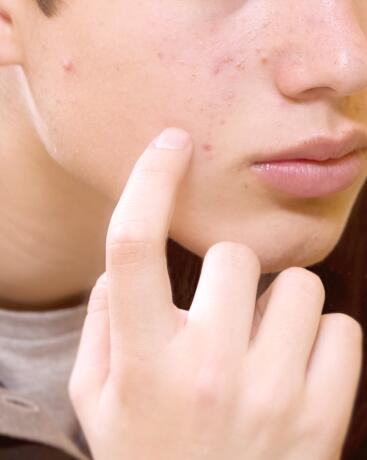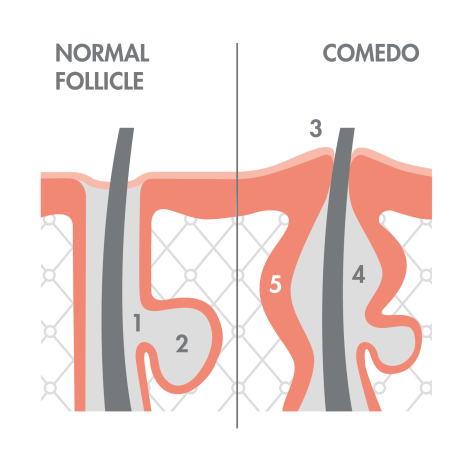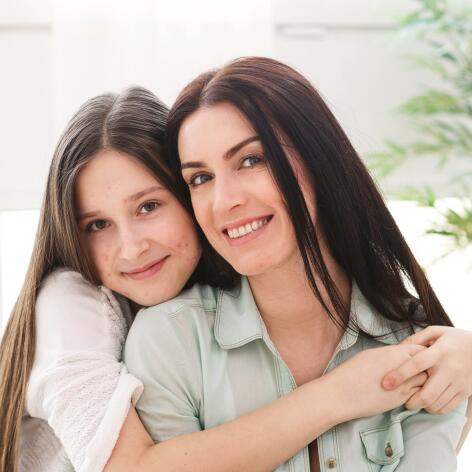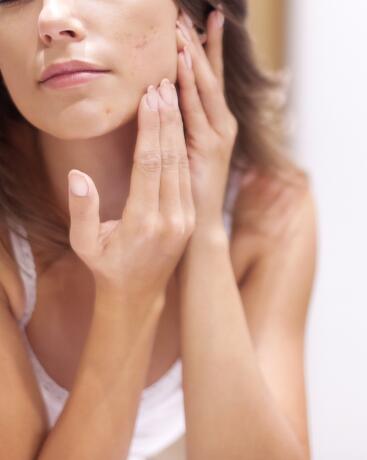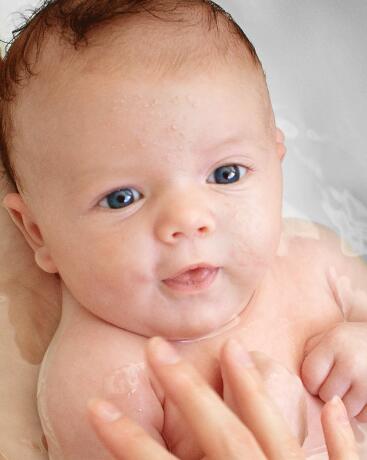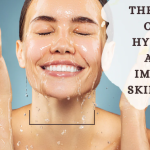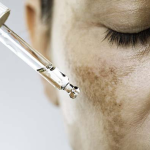What is acne-prone skin?
What is acne?
Acne is an inflammatory disease of the pilosebaceous follicle. Each hair is associated with a sebaceous gland that secretes sebum, an oily fluid whose role is to protect our skin. In the case of acne, the sebaceous gland is blocked by sebum that has become too thick and is secreted in excessive quantities. In addition, the cells at the entrance to the pilosebaceous follicle behave abnormally and create an imbalance in the flora.
Normal pilosebaceous follicle VS comedo 1: Sebum in its normal state 2: Sebaceous gland 3: Obstruction of the canal 4: Unbalanced sebum (thicker, changed composition) 5: Stem cell multiplication = thickening of the follicle wall
What causes acne?
Acne occurs mainly at puberty, due to hormonal changes. Hormonal changes can also lead to acne breakouts in women as adults. Genetics also play a role in this disease. If both parents were affected at a younger age, the risk of developing acne is increased. Other factors can also play a role, such as stress, smoking, pollution and even sun exposure. But more than identifying the cause, the most important thing is to identify the right treatment!
The different types of acne
Clogged pores encourage the development of blackheads (open comedones) or microcysts. This is called retentional acne. But when they become inflamed, under the effect of a bacterium – whose scientific name is Cutibacterium Acnes – they can turn into non-purulent red pimples (papules), purulent pimples (pustules) or larger pimples that are generally painful and deeply rooted in the skin (nodules). This is inflammatory acne (most common in adult women).

